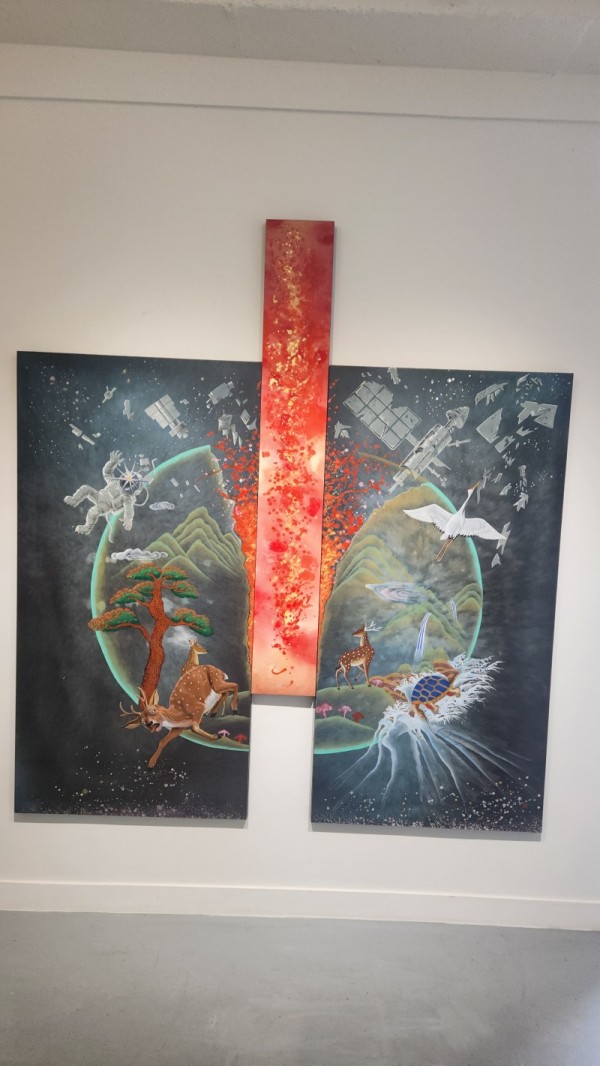
The Ruin of Longevity
Ottchil, Mineral Pigment, Acrylic on Hanji
145 × 161 cm, 2025
In traditional Korean culture, the Sipjangsaeng (Ten Symbols of Longevity) represented humanity’s yearning for utopia. Yet today, unchecked human development threatens the planet. Painter Kim Kyung-bok brings this urgency to canvas at his exhibition at Arte Soop Gallery (Insadong 5-gil 12), where he merges Korean folk painting with contemporary environmental themes.
artist Kim’s work transcends a simple reinterpretation of tradition.
By visualizing space junk—satellite debris and rocket fragments orbiting the Earth—he highlights the escalating environmental dangers facing both space and our planet.
Originally trained in design, Kim found a new artistic direction upon encountering minhwa (folk painting). “I wanted to combine traditional motifs with modern social issues to reflect the realities of ordinary people,”
Kim explained. “This time, the focus is on environmental challenges, particularly space junk.” According to Kim, more than 20,000 fragments larger than 10 cm and 600,000 pieces smaller than 1 cm are currently floating in Earth’s orbit. “With each collision, debris multiplies, posing a severe threat to both space activity and our planet,” he warned.
His paintings adapt the Sipjangsaeng symbols—deer, turtles, pines—that once embodied longevity and prosperity, depicting them as shattered and scattered into the cosmos.
The imagery satirizes the destructive side of technological progress and the resulting ecological crisis. In some works, fiery pillars symbolize Earth’s collapse, intensifying the viewer’s sense of alarm.
Kim had previously fused minhwa with cultural forms such as Spanish flamenco and traditional Turkish dance, but this exhibition marks his expansion into global issues.
Using hanji (traditional Korean paper), mineral pigments, and touches of acrylic paint, he creates vivid contrasts to heighten the dramatic effect.
“I wanted to portray the collision between technology and civilization, and the damage it brings,” he said.
The pandemic also reshaped his artistic vision. Before COVID-19, Kim painted folk motifs emphasizing auspicious meanings. Afterwards, he sought instead to convey light and hope amid social constraint. “I realized it was important to open closed hearts and express a sense of hope,” he reflected.
Looking ahead, Kim intends to continue bridging tradition and contemporary concerns. “I want to make folk painting resonate with today’s audiences by linking it to real-world issues,” he noted. “Themes of environment and social responsibility will remain central to my practice.”
Kim holds a Master’s degree in Art from Dongguk University Graduate School of Culture and Arts.